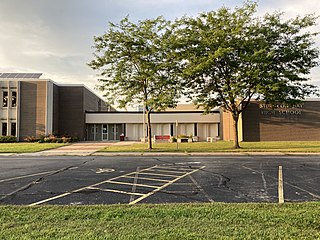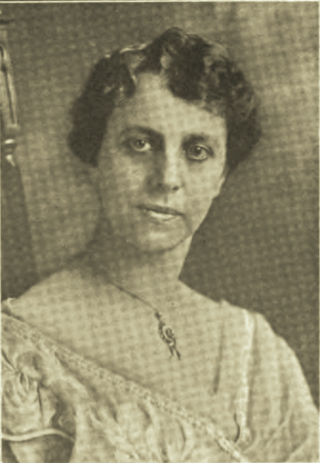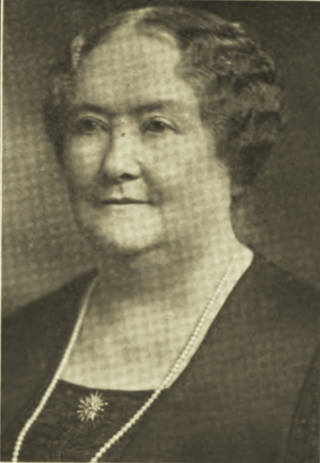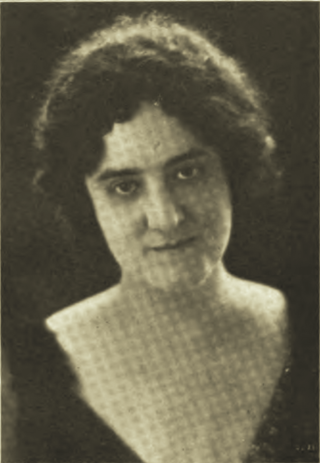Related Research Articles

Cass Gilbert was an American architect. An early proponent of skyscrapers, his works include the Woolworth Building, the United States Supreme Court building, the state capitols of Minnesota, Arkansas, and West Virginia, the Detroit Public Library, the Saint Louis Art Museum and Public Library. His public buildings in the Beaux Arts style reflect the optimistic American sense that the nation was heir to Greek democracy, Roman law and Renaissance humanism. Gilbert's achievements were recognized in his lifetime; he served as president of the American Institute of Architects in 1908–09.

Wesleyan College is a private, liberal arts women's college in Macon, Georgia, United States. Founded in 1836, Wesleyan was the first college in the world chartered to grant degrees to women. It opened in 1839, two years after the opening of Mount Holyoke College.

Central Catholic High School is a college prep school located in Portland, Oregon, United States. Central Catholic is affiliated with the Roman Catholic Church, and is the only archdiocesan high school in the Roman Catholic Archdiocese of Portland.

Sumner High School is a St. Louis public high school that was the first high school for African-American students west of the Mississippi River in the United States. Together with Vashon High School, Sumner was one of only two public high schools in St. Louis City for African-American students and was segregated. Established in 1875 only after extensive lobbying by some of St. Louis' African-American residents, Sumner moved to its current location in 1908. It has historically also been known as Charles H. Sumner High School, and Sumner Stone High School.
Howard–Payne Junior College was a women's college located in Fayette, Missouri. Affiliated with the Methodist Episcopal Church, South, it opened in 1859 and closed in 1927.

Hedding College was a college in Abingdon, Illinois, that operated from 1855 to 1927. The school was named after Methodist Bishop Elizah Hedding. Merged with Illinois Wesleyan University in 1930. The campus was used by the Roosevelt Military Academy for a while.

William Hall Sherwood was a late 19th and early 20th century American pianist and music educator who, after having studied in Europe with notable musicians, became one of the first renowned piano performers in the United States. He founded the Sherwood Music School, which was acquired by Columbia College Chicago in 2007.

Adelaide George Bennett was an American teacher, poet, and botanist of the long nineteenth century. She is remembered for her poems which described Native American life and the Red Pipestone Quarry.

Sturgeon Bay High School is a public high school located in Sturgeon Bay, Wisconsin. It is part of the Sturgeon Bay School District.
Central High School (1860–1982) was a public high school in Minneapolis, Minnesota.

Cora Johnstone Best and Audrey Forfar Shippam were American mountaineers who summitted peaks in North America, Asia, and Europe. Both were members of the Alpine Club of Canada. During their trips together they became the first women to climb Mount Hungabee, traveled 200 hundred miles by canoe, and attempted to hunt snow leopards in China. In the 1920s, they had a film lecture series where Best described their exploits using slides that had been colored by Shippam. Separate from their adventures together, Dr. Best was a physician and Audrey Shippam was an artist.

Beatrice Gjertsen Bessesen was an American operatic soprano. She was the president of the Twin City Music and Dramatic Club. Bessesen sang with the St. Olaf Choir and toured with it in Norway. She made successful concert tours in the U.S. and Europe, appearing with various European opera companies. She sang in practically all the leading centers of Europe, and was the prima donna in many big operas. She was a strong factor in developing cultural and artistic appreciation among Norwegian Minnesotans. She is the namesake of the Bessesen Building, which is on the National Register of Historic Places listings in Minnesota.

Rita Bell was an American lyric soprano and entertainer in vaudeville, musical theatre, radio, and "talkies". She was the principal actress of several Broadway musicals, such as "The Gingham Girl" and "Spice of Life". During her world tour, her singing voice and personality were broadcast from radio stations in Amsterdam, Berlin, Cape Town, and London. A singer-songwriter, Bell wrote many of her songs.

Agnes Moore Fryberger was an American music educator, lecturer, and author, as well as a clubwoman. She was a pioneer in the northwestern U.S. in lecture recitals on opera. Fryberger served as the Educational Director of the Minneapolis Symphony Orchestra (1924-25), and of the St. Louis Symphony Orchestra (1926-30). She was the first director of music appreciation at the University of Louisville. Her book, Listening Lessons in Music (1916), used in France, England, and the Philippines, was the first text that incorporated phonograph records into a school lesson's grading process.

Wilma Anderson Gilman was an American concert pianist, music teacher, and clubwoman. After making her debut in Brussels, she appeared in concerts in 34 U.S. states. Gilman was the first Minnesota musician asked to play as a soloist with the Minneapolis Symphony.

Mabel Johnson Leland was an American lecturer on Scandinavian literature and translator from Norwegian to English. Her most notable work with the translation of Arne Garborg's The Lost Father from the New Norse.

Nellie Moyer Budd was an American music teacher. Trained at the New England Conservatory of Music, she served for many years as the head of the music department at Windom College, Montevideo, Minnesota.

Allie Luse Dick was an American music educator who identified with various religious, social, philanthropic and educational activities. Among the positions she held, Dick served as director of music at Hedding College, 1887-88, and again at Missouri Wesleyan College, 1892-95.

Anna Augusta Von Helmholtz-Phelan was an American university professor, author, speaker, poet and social worker. For more than four decades, she taught English and writing at the University of Minnesota, with a specialty in short stories, before retiring in 1949 as assistant professor emeritus of English. Phelan was the author of The Indebtedness of Samuel Taylor Coleridge to August Wilhelm Von Schlegel, The Social Ideals of William Morris (1908), The Staging of the Court Drama to 1595 (1909), and The Social Philosophy of William Morris (1927). A collection of her poetry was published in The Crystal Cup (1949), the proceeds of which established the "Anna Augusta Von Helmholtz-Phelan Award for Creative Writing" at the University of Minnesota.

Nellie A. Hope was an American violinist, music teacher, and orchestra conductor. She founded and conducted the first women's orchestra directed by a woman in the Twin Cities area, "Miss Hope's Ladies' Orchestra". The first orchestra at Macalester College was established by Hope. In Saint Paul, Minnesota, Hope was active in local music circles, her studios at the Chamber of Commerce Building being the center of a busy musical life.
References
- ↑ City of Cameron History - cameron-mo - Retrieved September 23, 2009 Archived February 9, 2009, at the Wayback Machine
- ↑ Foster, Mary Dillon (1924). "Alice Luse Dick". Who's who Among Minnesota Women: A History of Woman's Work in Minnesota from Pioneer Days to Date, Told in Biographies, Memorials and Records of Organizations. Mary Dillon Foster. p. 86. Retrieved 26 June 2022.
 This article incorporates text from this source, which is in the public domain .
This article incorporates text from this source, which is in the public domain . - ↑ Frost, S.E. (1971). Education's Own Stations. Arno Press. p. 224. ISBN 9780405035739 . Retrieved April 3, 2015.